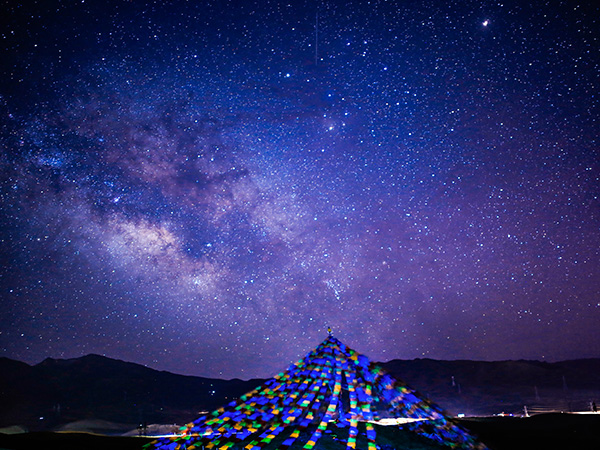Sun and Moon Mountain (Chinese name: 日月山) is located in the 40 miles away from the Huangyuan County in Qinghai Province. The average sea level of this mountain is about 4,000 meters. Sun and Moon Mountain is a natural boundary in China. It is the boundary of the Loess Plateau and
Qinghai-Tibetan Plateau, the agricultural area and the grassland farming area, monsoon area and non-monsoon area. On the east side of Sun and Moon Mountain, farmlands form a poetic picture in frontier place. And on the west side, the vast grassland and groups of sheep and caw form a nomadic picture. It is rarely to see the great difference between the two sides of this mountain.

Sun & Moon Mountain in the History
In the past, it was a vital communications centre between Central China and the southwest frontiers as well as the west regions. In 420, the first year of the Shengui reign under Emperor Mingdi in the Northern Wei Dynasty (386-534), the monk Song Yun left
Luoyang City for India to learn about Buddhism via Sun and Moon Mountain. Later on, Princess Wencheng passed Sun and Moon Mountain when she was going to marry Songtsen Gampo, King of the Tubo tribe.
Legend of Sun & Moon Mountain
Sun and Moon Mountain was called Chiling Range (Russet Ridge) during the Tang Dynasty (618-907) because of its grassless russet mountaintop. Legend has it that on reaching the mountains near Xining, she took out the Sun & Moon Treasure Mirror given to her by her mother and saw within it her homeland Chang-an (today’s Xi-an City). She was overwhelmed, but knew she had a duty to the two nations, and threw the mirror down onto the mountain. The mirror turned into
Qinghai Lake and her tears into Daotang River (back flowing river). Its flow westward symbolizes the princess’s resolution to never return. The mountain was renamed the Sun-and-Moon Mountain, and on either side of the pass, the Ri (Sun) and Yue (Moon) Pavilions were built to commemorate Princess Wencheng’s sacrifice
Tips to Visit Sun & Moon Mountain
From
June to September Sun & Moon Mountain is particularly beautiful as the grass is lush and wildflowers grow in abundance
The Sun Pavilion and the Moon Pavilion were built on each side of the mountain pass to remember Princess Wencheng. Of the twin pavilions, the Moon Pavilion in particular depicts the great cultural communication Princess Wencheng brought to Tibet, including crop seeds, technology, medicine and Buddhism. It is said that she helped bring civilization to Tibet.
